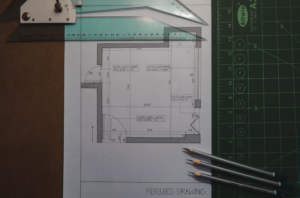Characteristics of Sustainable Architectural Building Design

In a world where environmental concerns are at the forefront, it is essential for us to explore ways in which we can create buildings that not only meet our needs but also minimize their impact on the planet. Sustainable architectural designs at Immoportal offer a solution by incorporating green materials, passive strategies, renewable energy sources, and eco-friendly landscaping techniques. So if you’re ready to dive into the world of sustainable building design, let’s get started.
Green Building Materials

Green building materials are the foundation of sustainable architectural design. These materials are chosen for their minimal environmental impact, both during production and throughout their lifespan. One popular green building material is bamboo, known for its rapid growth and renewability. Bamboo can be used as a substitute for traditional hardwoods in flooring, furniture, and even structural elements. Natural insulation materials like cellulose made from recycled paper or wool sourced from sheep provide effective thermal performance without harmful chemicals found in conventional insulation products. Low VOC (volatile organic compounds) paints and finishes are another important aspect of green building materials.
Passive Sustainable Design
 What is it exactly? This key design focuses on utilizing natural resources and the building’s surroundings to minimize energy consumption. There are several elements of passive sustainable design, including proper insulation, natural ventilation optimization, and maximum utilization of natural light. Additionally, passive solar design plays a crucial role in reducing energy consumption by utilizing solar heat gain during winter months while minimizing it during summer months. Strategies may include orienting windows towards the sun’s path, implementing shading devices like overhangs or awnings, and using thermal mass materials to store excess heat.
What is it exactly? This key design focuses on utilizing natural resources and the building’s surroundings to minimize energy consumption. There are several elements of passive sustainable design, including proper insulation, natural ventilation optimization, and maximum utilization of natural light. Additionally, passive solar design plays a crucial role in reducing energy consumption by utilizing solar heat gain during winter months while minimizing it during summer months. Strategies may include orienting windows towards the sun’s path, implementing shading devices like overhangs or awnings, and using thermal mass materials to store excess heat.
Renewable Energy
In this architectural design, renewable energy not only reduces the carbon footprint but also helps create a more self-sufficient and resilient built environment. Here are some key aspects of incorporating renewable energy into architectural designs. One important aspect is the use of solar panels to harness what the sun offers to humanity. This clean and abundant source of energy can also be stored for later use, providing backup power during periods of high demand or power outages. Another form of renewable energy that can be harnessed is wind power. Wind turbines are especially effective in areas with constant winds, such as coastal regions or open landscapes.
Eco-Friendly Landscaping

The landscaping can also be optimized for sustainable architectural design. It not only enhances the aesthetic appeal of the property but also contributes to environmental conservation. By incorporating eco-friendly landscaping practices, architects can create outdoor spaces that are in harmony with nature. One key element of eco-friendly landscaping is water conservation. Another important aspect is biodiversity preservation. Encouraging the use of native plants and creating habitats for local wildlife fosters a healthy ecosystem. Incorporating features like bird feeders or butterfly gardens can attract diverse species while promoting pollination.
Sustainable architectural building design encompasses a range of strategies aimed at minimizing environmental impact without compromising functionality or aesthetics. By embracing these characteristics of sustainability in their designs, architects play a crucial role in creating resilient communities for future generations. Together with clients who prioritize sustainability goals from conception to completion, we can build a greener tomorrow.
In a world where environmental concerns are at the forefront, it is essential for us to explore ways in which we can create buildings that not only meet our needs but also minimize their impact on the planet. Sustainable architectural designs at Immoportal offer a solution by incorporating green materials, passive strategies, renewable energy sources,…
Last Posts
- Don’t Ignore These! Signs You Need to Remove a Tree
- Eco-Friendly Elegance: How to Incorporate Solar Pond Fountains in Your Outdoor Design
- The Key Reasons Homebuyers Opt for Condominiums
- The Future of Green Homes: Harnessing AI for Sustainable Living
- ESG and Real Estate: Understanding the Three Pillars of Sustainable Development
- The Ultimate Guide to Selling Your House
- Understanding Why First-Time Real Estate Investors Lose Money

